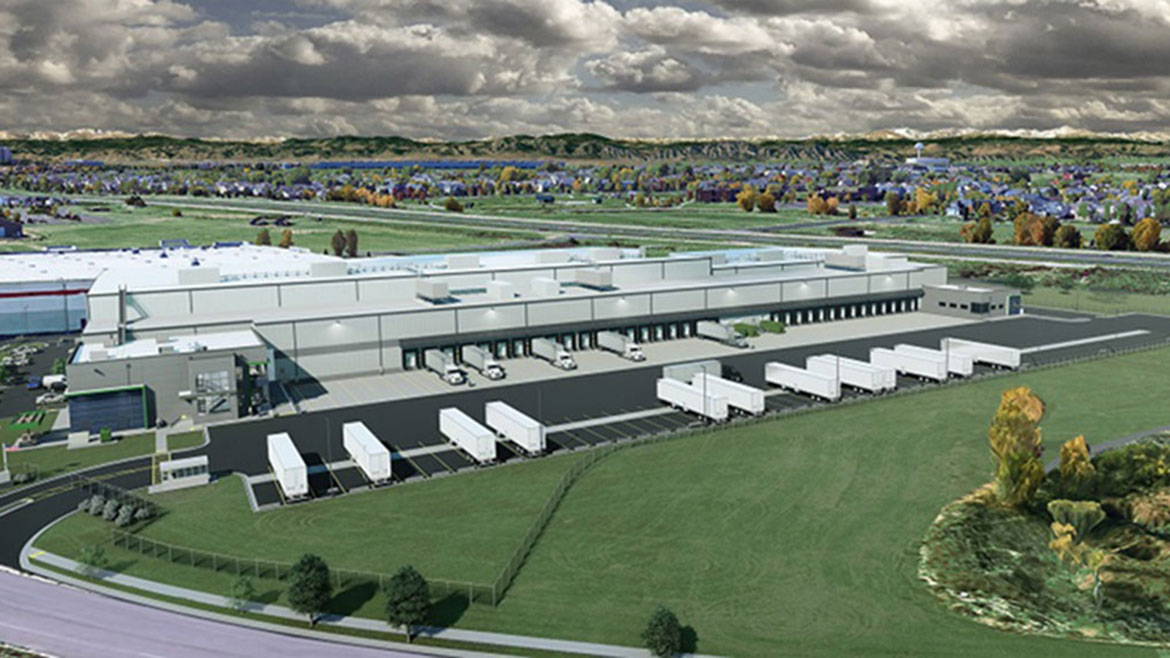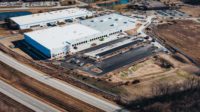The need for cold storage in Colorado’s capital city and the surrounding area is mile high.
From Castle Rock to Fort Collins and Golden to Greeley, the Denver-Aurora-Lakewood MSA represents 10 counties with a growth rate that has consistently outpaced the national rate every decade since the 1930s.
The region grew steadily in the past 10 years, and by 2030, its population is anticipated to increase to more than 3.6 million.
And Denver is the most populous city of the 18-county Front Range Urban Corridor, an oblong region stretching across the eastern side of the Rocky Mountains in Colorado and Wyoming, with a population of over 5 million.
“Denver is in a unique location, as it’s the largest city within 500 miles and it is a distribution hub due to its access to the mountain states and the Southwest. Another benefit of distributing from Denver is that it is equidistant from larger cities in the Midwest and large West Coast cities,” said Gary T. Saykaly, a Denver-based advisor for CBRE focused on national industrial accounts. “Also, Denver benefits from Colorado’s position as an abundant agricultural powerhouse, having 38,000 farms and ranches in the state.”
Ground was broken last year on Denver’s first cold storage speculative development. The 247,000-square-foot multi-temperature facility was developed by Karis Cold, a private-equity-backed real estate company focused exclusively on building and leasing cold storage facilities.

Located at in Brighton, Colorado, the site is strategically positioned to service Colorado’s Front Range and Rocky Mountain regions.
“Thee was very little, if any, new cold storage in the market. Denver is an island – if you want to distribute to the area you have to be there to do it,” said Jake Finley, CEO of Karis Cold.
The 247,000-square-foot facility has 10,000 pallet positions. It was completed in November and sold to a national cold storage company, Finley said.Food manufacturing exports have nearly quadrupled since 1999, accounting for $1.6 billion in 2019, according to the Metro Denver Economic Development Corporation. Colorado food manufacturing exports represent nearly 20% of all Colorado exports and are the second largest export category for the state.
The state is home to more than 3,200 food and beverage production-related companies, employing more than 47,000 people, according to EDC stats.
“There is a lot of natural products – more and more food is perishable, frozen and/or temperature controlled – and a lot of that is coming out of the Denver area,” Finley said. “To serve that 3 million people, you’ve got to really be in Denver.”
JBS USA Holdings, the largest beef producer in the world, this spring announced plans for a 200,000-square-foot “blast freezing” and cold storage building in Windsor, about an hour north of Denver via I-25. JBS is partnering with Lineage Logistics on the 14.86-acre site in the Great Western Industrial Park.
“Through this tremendous partnership, we will construct a new, world-class automated cold storage facility that leverages our industry-leading technology and expertise and builds a more efficient supply chain for JBS,” Lineage president and CEO Greg Lehmkuhl said in a news release.
Other recent projects include a 240,000-square-foot addition to the J.M. Smucker Company’s Longmont facility, which is expected to be operational by fall 2022. Denver-based Ardent Mills expanded capacity and production at its warehousing and packing lines across the U.S. to meet consumer demand for flour.
CBRE capacity demand projections for the next five years estimate that the U.S. requires an additional 100-million-square-feet of cold storage space.

“The concept of retrofitting an existing dry warehouse, including constructing a cold ‘box-in-a-box’ inside a dry warehouse, sounds like a great way to produce cold storage capacity in a much shorter time frame than developing a new cold storage facility. The only problem is that the vacancy rate of dry warehouses nationwide, including Denver, is very low,” Saykaly said. “The closest option, which would considerably compress the cold storage development time frame, is finding a speculative dry warehouse that is currently being developed and is early enough in the construction phase, to convert to cold storage. The good news is that you do have a significant number of dry warehouses in development, with the majority in the Denver metro market being speculative.”
Karis recently purchased a 170,000-square-foot building in Denver and plans to lease it as a temperature-controlled facility.
“We’re seeing a lot of users I’ve never heard of in this space that need specialized buildings,” Finley said. “Denver will always be an important market for us.”









